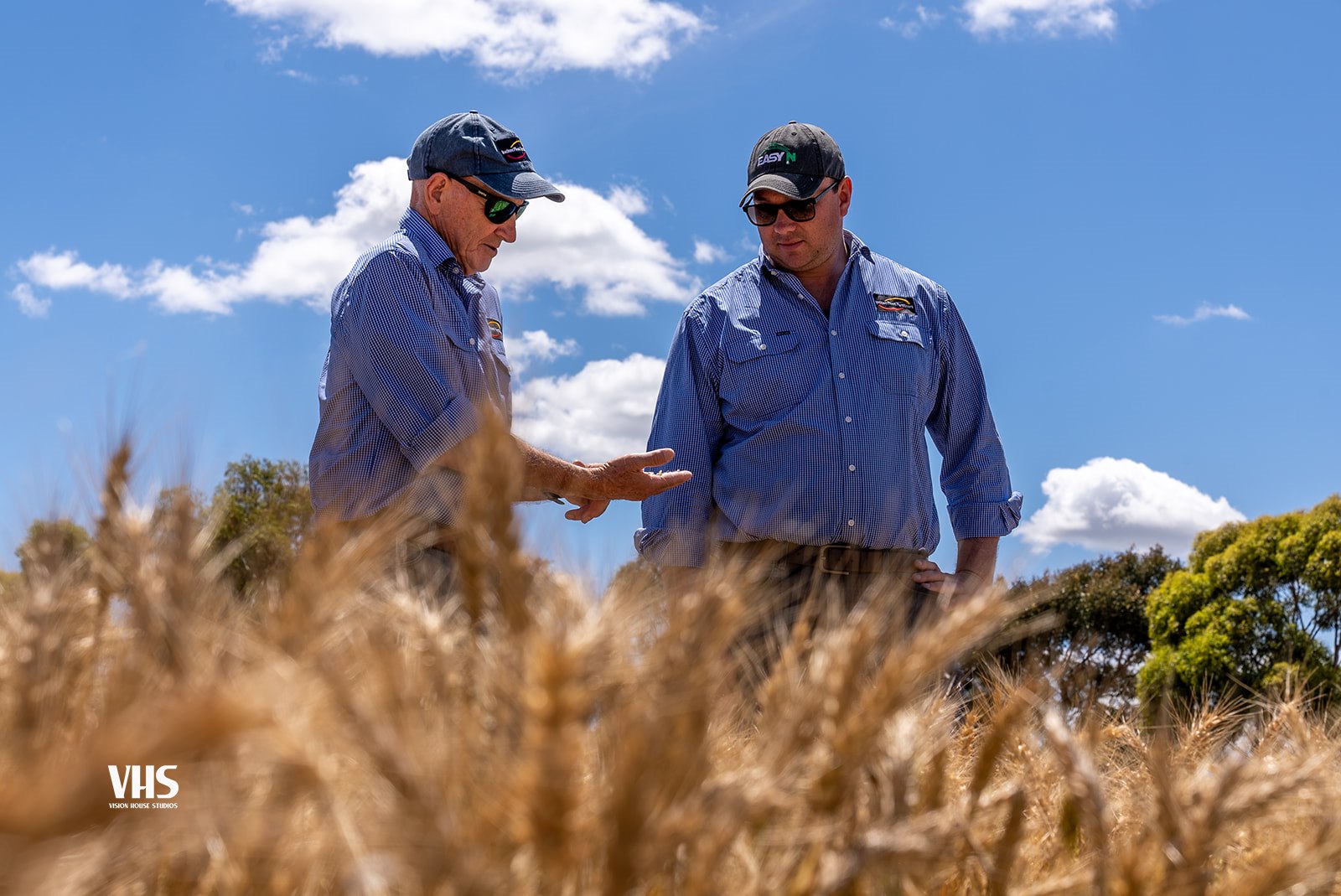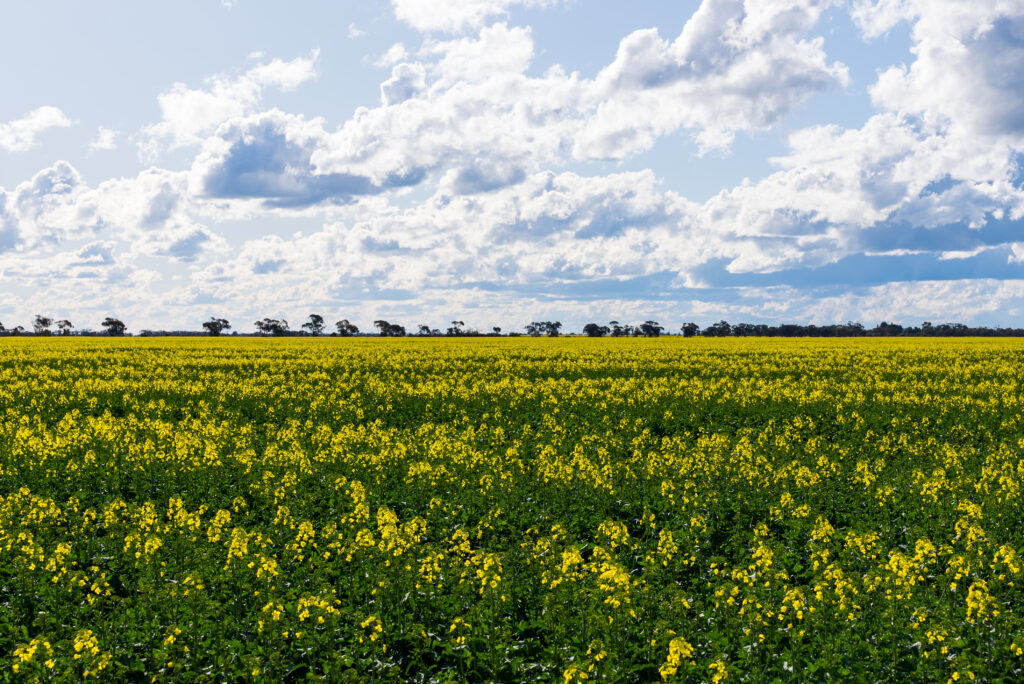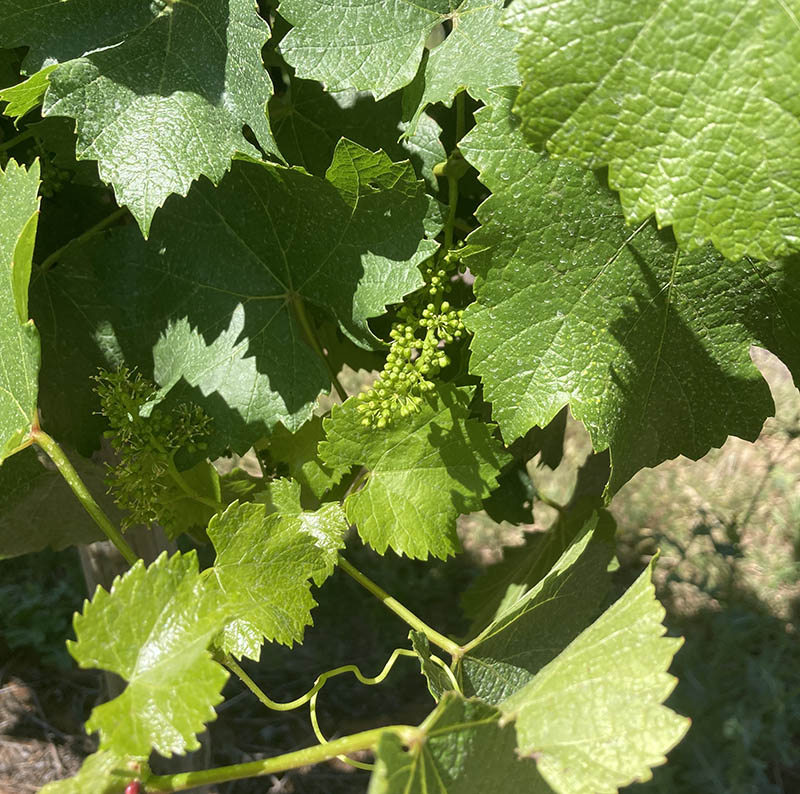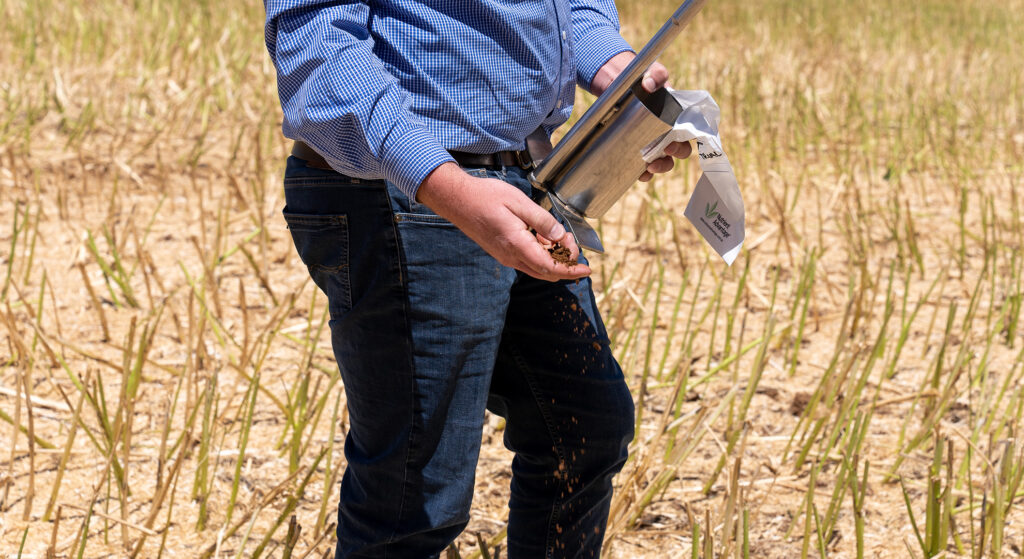Agronomic Insights

Jim Laycock – IPF Technical Agronomist
In the southern region after 3 above average seasons 2023 is shaping up to be a more challenging year. Soil moisture profiles are favourable, however the rainfall outlook from BOM is for below average rainfall for the majority of the winter crop area and after three big nutrient removal seasons soil-nitrogen levels are low in most areas. As always, a tailored nitrogen strategy will be needed to optimise grain yield and returns.
With less than favourable seasonal conditions forecast managing nitrogen application rates with application timings, placement methods and product types to maximise nitrogen use efficiency is still important. Fortunately, nitrogen prices have returned to more favourable levels for growers.


Nitrogen is an essential nutrient for dry matter production, shoot density and potential yield in cereals. When crops begin to mature, nitrogen within the plant is redirected to developing grains. Carbohydrates are then deposited within the grain, and it is the level of carbohydrates that determine grain size and yield. This dilution of nitrogen in grain also determines final grain protein levels.
As with cereals canola requires adequate levels of nitrogen to support dry matter production, flower formation, and potential yield. Adequate nitrogen availability promotes vigorous vegetative growth, leading to larger leaf area, increased photosynthetic activity, and improved plant health. This, in turn, contributes to higher yields in canola crops. Nitrogen is particularly important during the early growth stages of canola.
Throughout the crop nitrogen requirement assessment process it is critical that nitrogen is identified as the only limitation.
The first step in planning for nitrogen application is a simple budgeting process to assess nitrogen requirements. For wheat budget 40kgs of N/tonne of grain and for canola 80kgs/N. Knowing the nitrogen demand of crops is essential in determining nitrogen requirements.
Right Rate – Estimating existing nitrogen supply
There are several tools available to advisers to aid in determining available crop nitrogen, such as reviewing paddock fertiliser and crop histories, deep soil nitrogen test, in crop NDVI. The best decisions are made based on solid information collected from a range of sources. The guiding ‘4R’ principles of the right source, right rate, right time, and the right placement of fertiliser requires knowledge of both crop demand and soil N supply. Seasonal conditions remain the primary driver of crop demand for N in dryland cropping systems and to a significant extent also fertiliser use efficiency.
Paddock history
Information such as previous crop yield, previous grain protein levels, crop rotation, fallow weed control, soil moisture levels, seasonal conditions and expectations can all help guide topdressing decisions. For example, where paddocks produced wheat crops in 2022 with less than 10.5 to 11% protein, it suggests nitrogen supply was limiting (Russell, 1963). However, relying solely on paddock history information can be misleading at times, as no direct measurements are taken.
Deep soil nitrogen tests
Pre-plant deep soil nitrogen test results are an excellent resource for nitrogen management. Monitor the paddocks that are known through deep N soil test results or paddock history to have low soil nitrogen levels. Sampling in-crop can also play a role where Deep N’s haven’t been done pre plant. When sampling post planting, be careful to avoid any banded pre-plant nitrogen or starter nitrogen fertilisers.
Right Time
Nitrogen applications before GS30 can increase tiller numbers and dry matter in cereals. The application of 30 to 40kgs/ha/N pre GS30 may be required to stimulate additional tillers where deep soil nitrogen levels are less than 60mg/kg soil nitrogen in a 0-60cm soil profile.
Easy N through streamers or flat fans is ideally suited to this scenario with accurate placement, timely application and potentially less volatilisation losses than urea on alkaline soils.
Nitrogen applications between GS31 – GS37 correspond to the period of stem elongation and some carry-over of nitrogen into grain protein may occur. When nitrogen is applied after GS59, it is generally to manipulate grain protein and maintain yields in above average seasons. Nitrogen use efficiency is reduced at these later stages of application. Conditions and likely returns need to be assessed carefully. Remember that it is only when the yield potential has been reached that additional nitrogen can contribute to higher grain protein levels in wheat.
Nitrogen is particularly important during the early growth stages of canola and there does not appear to be a penalty associated with ”haying off” in spring as we have seen in the past with wheat. Grain yield in canola is closely associated with total dry matter production and seed m−2. Nitrogen use efficiency is influenced by N recovery and uptake efficiency (Riar, et al, 2020).

Trial work at the Grenfell LT site supports other trial results (GRDC update, 2017) where high rates of N in low rainfall scenarios did not have an adverse effect on grain quality. Maximum grain yield was achieved with 20P/60N treatments. Increasing nitrogen rates to 120N did not have a significant effect on grain yield although it did reduce oil from 47% to 45.5%.
Aim to Maximise Nitrogen Use Efficiency
- Ensure all other nutrients are non limiting and nitrogen is the only limitation.
- Apply nitrogen prior to periods of rapid growth
- There is a full moisture profile and a favourable seasonal outlook
- Consider Green Urea NV® to reduce losses of nitrogen through volatilisation
- The paddock is free from potentially limiting soil conditions – compaction, sodicity, acidity, salinity, sub-soil constraints.
- Root disease is non-limiting – crown rot, rhizoctonia, take all.
- Leaf disease is non-limiting – strip rust, yellow leaf spot, Septoria.
- Weeds and insects are controlled.
Right Product – Nitrogen Losses when Top-Dressing
When broadcast on the soil surface urea or urea based blends can be susceptible to NH3 loss. The ratio of ammonia to ammonium determines the potential for ammonia loss. The higher the initial soil pH and the pH in the reaction zone, the greater the potential for volatilisation of the ammonia. Nitrogen losses from alkaline soils in SE Australia have been measured as high as 26% of total N lost through volatilisation over a period of 20 days on an alkaline clay applied in the first week of September. (Turner, 2010).
Different N-fertilisers applied to the same soil type can react in very different ways and have significant differences in potential losses. Swapping from urea to ammonium sulphate products may be sound in most cases, but not where the soil has free lime (>2% calcium carbonate CaCO3) (Schwenke 2011). On these soils the risk of volatilisation can be high.
Factors favouring NH3 volatilisation losses from top dressed urea
- Light rain post application, enough to dissolve the urea granule but not enough to wash the dissolved granule into the soil
- Crop residue on the soil surface
- Temperatures above 18C
- Alkaline soils
- Wind
- Low soil CEC
- Application to a moist soil that dries down post application
The safest applications are those made to dry clay soils, in low humidity conditions with no wind and sufficient rainfall to move the urea into the soil within a few days of the application.
Green Urea NV® is a urea based product that is treated with N-(n-Butyl)-thiophosphoric triamide (NBPT). When NBPT is added to urea it inhibits the activity of the urease enzyme for a period of up to 14 days. During that period the losses of N as NH3 from the surface applied urea are significantly reduced and N is still present for the next rainfall event.
In a meta-analysis of 15 Incitec Pivot Fertilisers top-dress nitrogen trials conducted across SE Australia 2005-07 Green Urea NV® gave a statistically significant yield response compared with the control and urea. Green Urea NV® also gave a significant protein increase compared with the control and urea.
Wheat productivity and nitrogen use efficiency was measured at three sites in the Wimmera region of Victoria, Australia between 2012 and 2014. At those sites NBPT (the urease inhibitor in Green Urea NV®) increased yield (+ 7–11%) in 2 of 3 years compared to unamended urea. (Wallace et al, 2019).
In another field studies the N management strategy significantly affected losses of fertiliser N depending on seasonal conditions, with urease inhibitors (NBPT) producing significant benefits in reducing losses of top-dressed urea under dry seasonal conditions. (Armstrong et al, 2021)
Incitec Pivot Fertilisers trial work in the Mallee in 2014 also demonstrated the effectiveness of Green Urea NV® over urea with an early September top-dress and 17 days before a welcome rainfall event of 35mm. The Green Urea NV® treatment returned a significant grain yield response over urea (0.41t/ha), protein response (0.7%) and improved nitrogen use efficiency from 33.7% for urea to 60.5% for Green Urea NV®.
When top dressing large acreages with Green Urea NV® topdressing can commence 4/6 days before a significant rainfall event with confidence that all the nitrogen is still available for incorporation into the soil profile when that rain front comes through.
The cost of N losses on highly N responsive situations will be more than just the value of N. If grain yield is compromised, which is highly possible on low N soils, the outcome will be worse.
All farming systems should aim to maximise nutrient use efficiency. When choosing the most appropriate product to apply consideration should be given to the rate of application, the frequency of application, the timing of the application, the economic objectives, and any environmental consequences.
Further Information
For more information send me an email at jim.laycock@incitecpivot.com.au.
You can also contact:
Clint Sheather clint.sheather@incitecpivot.com.au David McRae david.mcrae@incitecpivot.com.au
REFERENCES
Turner DA, Edis RE, Chen D, Freney JR, Denmead OT (2012) Ammonium volatilisation from urea fertilizers applied to cereals in two cropping areas of southern Australia. Plant and Soil 93: 113-126.
Russell JS (1963). Nitrogen content of wheat grain as an indication of potential yield response to nitrogen fertilizer. Australian Journal of Experimental Agriculture and Animal Husbandry 3: 319-325.
McDonald G and Hooper P (2013) Nitrogen decision – Guidelines and rules of thumb. GRDC Update.
Wallace AJ, Armstrong RD, Grace PR, Scheer C, and Partington DL (2020) Nitrogen use efficiency of 15N urea applied to wheat based on fertiliser timing and use of inhibitors. Nutr Cycl Agroecosyst (2020) 116:41–56.
Armstrong R, Wallace A and Dunsford K (2021) Nitrogen fertiliser use efficiency ‘rules of thumb’ – how reliable are they? GRDC Update.
Schwenke G (2011) Nitrogen volatilisation: factors affecting how much N is lost, and how much is left over time. GRDC Update Papers, Goondiwindi.
Angus J et al. (2011) A review of break-crop benefits of brassicas.17th Australian Research Assembly on Brassicas (ARAB) Wagga Wagga August 2011.
Amritbir Riar, Gurjeet Gill, Glenn K. McDonald (2020) Rate of Nitrogen Rather Than Timing of Application Influence Yield and NUE of Canola in South Australian Mediterranean Environments. Amritbir Riar, Gurjeet Gill, Glenn K. McDonaldAgronomy 2020, 10, 1505; doi:10.3390/agronomy10101505.
Havlin, Beaton, Tisdale and Nelson () Soil Fertility and Fertilizer Management. 6th edition.
Resources
DOWNLOAD INSIGHTDISCLAIMER
This is a guide only, which we hope you find useful as a general tool. While IPF has taken all reasonable care in the preparation of this guide, it should not be relied on as a substitute for tailored professional advice and IPF accepts no liability in connection with this guide. Incitec Pivot Fertilisers manufactures and sources fertilisers from other suppliers. The fertiliser supply chain extends beyond the company’s direct control, both overseas and within Australia. Incitec Pivot Fertilisers hereby expressly disclaims liability to any person, property or thing in respect of any of the consequences of anything done or omitted to be done by any person in reliance, whether wholly or in part, upon the whole or any part of the contents of this article.





